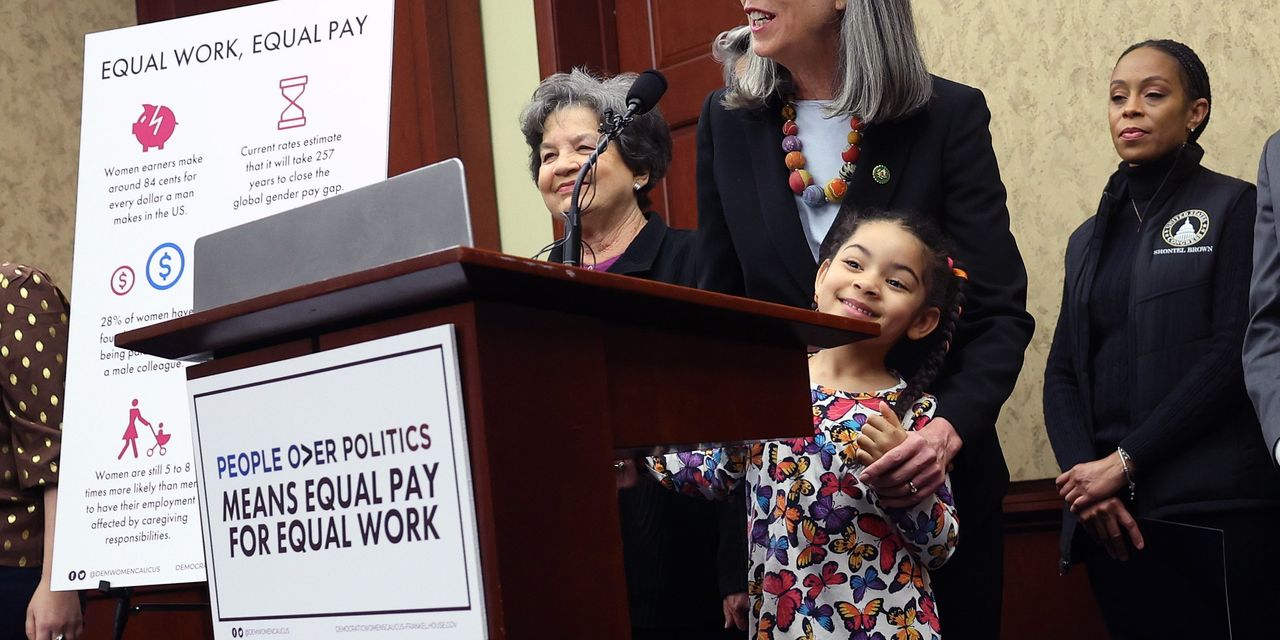A female manager who was paid less than a male worker she supervised. Female managers fired for complaining about not being paid the same as their male counterparts for performing the same duties. Female professors who weren’t paid as much as male professors. African-American women discriminated against in pay and promotions.
Those are among the cases the federal government is highlighting as part of its campaign to shine a light on the persistent pay disparities between men and women, 60 years after former President John F. Kennedy signed the Equal Pay Act into law on June 10, 1963.
The Equal Pay Act requires equal pay for women and men doing equal work in the same workplace. But on average, women working full time and year-round are paid about 84 cents for every dollar paid to men, according to the federal government. That gap is wider for women of color, mothers and LGBTQ+ workers, the Equal Employment Opportunity Commission said Friday.
“Whether you are a security guard, an IT analyst, a teacher, or even a professional athlete, we often still have an uneven playing field when it comes to equal pay,” EEOC chair Charlotte Burrows said in a statement.
From the archives (March 2023): Imagine seeing your job position on LinkedIn — and it pays $32K to $90K more than you make
The EEOC said women had filed 90.4% of the 5,003 Equal Pay Act charges lodged with the agency in the past five years, and 64.4% of the 19,427 wage charges filed under Title VII of the Civil Rights Act, which is supposed to protect employees and job applicants from discrimination based on race, color, religion, sex and national origin.
The EEOC said it saw more than 950 filings related to pay discrimination last fiscal year — the first increase in such charges in three years.
In the past five years, the agency added, the EEOC recovered $65.9 million for individuals who filed Equal Pay Act charges; $163.6 million for individuals who filed wage charges under Title VII; and $14.2 million through lawsuits including wage or compensation issues, including on the basis of gender.
The EEOC also noted it had filed an amicus brief in support of U.S. women’s professional soccer players before their historic pay-equity win last year following a six-year legal fight.
The pay gap between women and men in the U.S. has hardly budged over the past 20 years, with full-time and part-time working women earning 82 cents on a man’s dollar, a Pew Research Center report noted earlier this year. The report pointed to possible contributors such as the so-called motherhood penalty, women’s overrepresentation in lower-paying jobs, and gender discrimination.
From the archives (October 2022): ‘Child care is slipping farther and farther out of reach’: Child care for two children exceeds housing costs in most states
The San Francisco-based nonprofit Equal Rights Advocates on Friday released its latest Equal Pay Today Campaign platform. It includes pushing for passage of legislation like the Paycheck Fairness Act, which would strengthen the Equal Pay Act by protecting workers from retaliation for discussing pay; banning the use of salary history; and codifying the collection of pay data.
The nonprofit also urged support for legislation that would raise minimum wages, give or boost paid family leave, and protect against harassment and discrimination.
The EEOC asked social-media users to create videos and posts using the hashtag LevelThePayingField from Friday until Aug. 20. “If you want, remind your followers they can contact the EEOC if they suspect they are not getting equal pay for equal work,” the agency said.
From the archives (December 2022): Women need to save more, earlier and invest more aggressively for retirement — here’s why
Read the full article here










